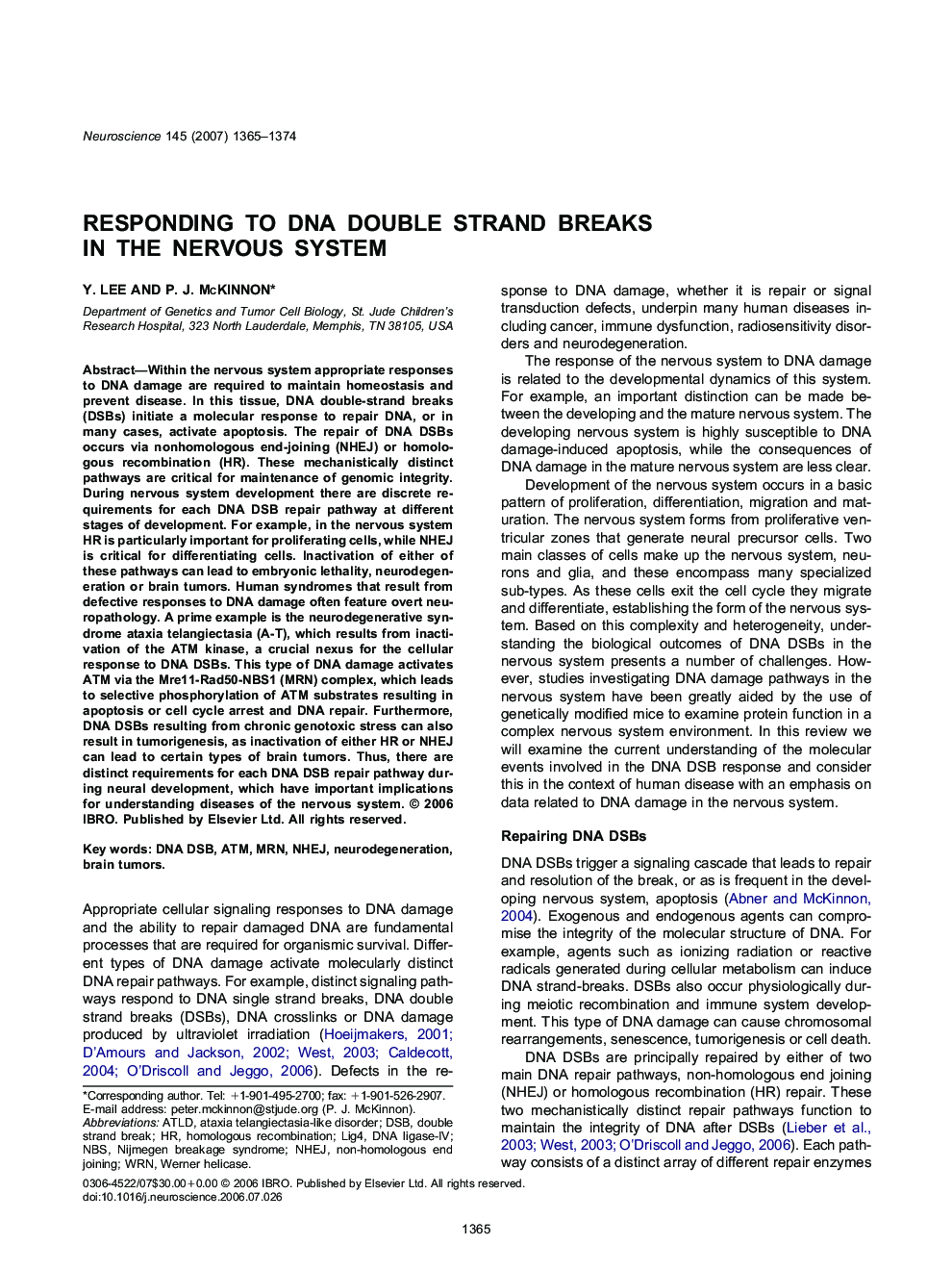| کد مقاله | کد نشریه | سال انتشار | مقاله انگلیسی | نسخه تمام متن |
|---|---|---|---|---|
| 6278484 | 1295819 | 2007 | 10 صفحه PDF | دانلود رایگان |
عنوان انگلیسی مقاله ISI
Responding to DNA double strand breaks in the nervous system
دانلود مقاله + سفارش ترجمه
دانلود مقاله ISI انگلیسی
رایگان برای ایرانیان
کلمات کلیدی
موضوعات مرتبط
علوم زیستی و بیوفناوری
علم عصب شناسی
علوم اعصاب (عمومی)
پیش نمایش صفحه اول مقاله

چکیده انگلیسی
Within the nervous system appropriate responses to DNA damage are required to maintain homeostasis and prevent disease. In this tissue, DNA double-strand breaks (DSBs) initiate a molecular response to repair DNA, or in many cases, activate apoptosis. The repair of DNA DSBs occurs via nonhomologous end-joining (NHEJ) or homologous recombination (HR). These mechanistically distinct pathways are critical for maintenance of genomic integrity. During nervous system development there are discrete requirements for each DNA DSB repair pathway at different stages of development. For example, in the nervous system HR is particularly important for proliferating cells, while NHEJ is critical for differentiating cells. Inactivation of either of these pathways can lead to embryonic lethality, neurodegeneration or brain tumors. Human syndromes that result from defective responses to DNA damage often feature overt neuropathology. A prime example is the neurodegenerative syndrome ataxia telangiectasia (A-T), which results from inactivation of the ATM kinase, a crucial nexus for the cellular response to DNA DSBs. This type of DNA damage activates ATM via the Mre11-Rad50-NBS1 (MRN) complex, which leads to selective phosphorylation of ATM substrates resulting in apoptosis or cell cycle arrest and DNA repair. Furthermore, DNA DSBs resulting from chronic genotoxic stress can also result in tumorigenesis, as inactivation of either HR or NHEJ can lead to certain types of brain tumors. Thus, there are distinct requirements for each DNA DSB repair pathway during neural development, which have important implications for understanding diseases of the nervous system.
ناشر
Database: Elsevier - ScienceDirect (ساینس دایرکت)
Journal: Neuroscience - Volume 145, Issue 4, 14 April 2007, Pages 1365-1374
Journal: Neuroscience - Volume 145, Issue 4, 14 April 2007, Pages 1365-1374
نویسندگان
Y. Lee, P.J. McKinnon,